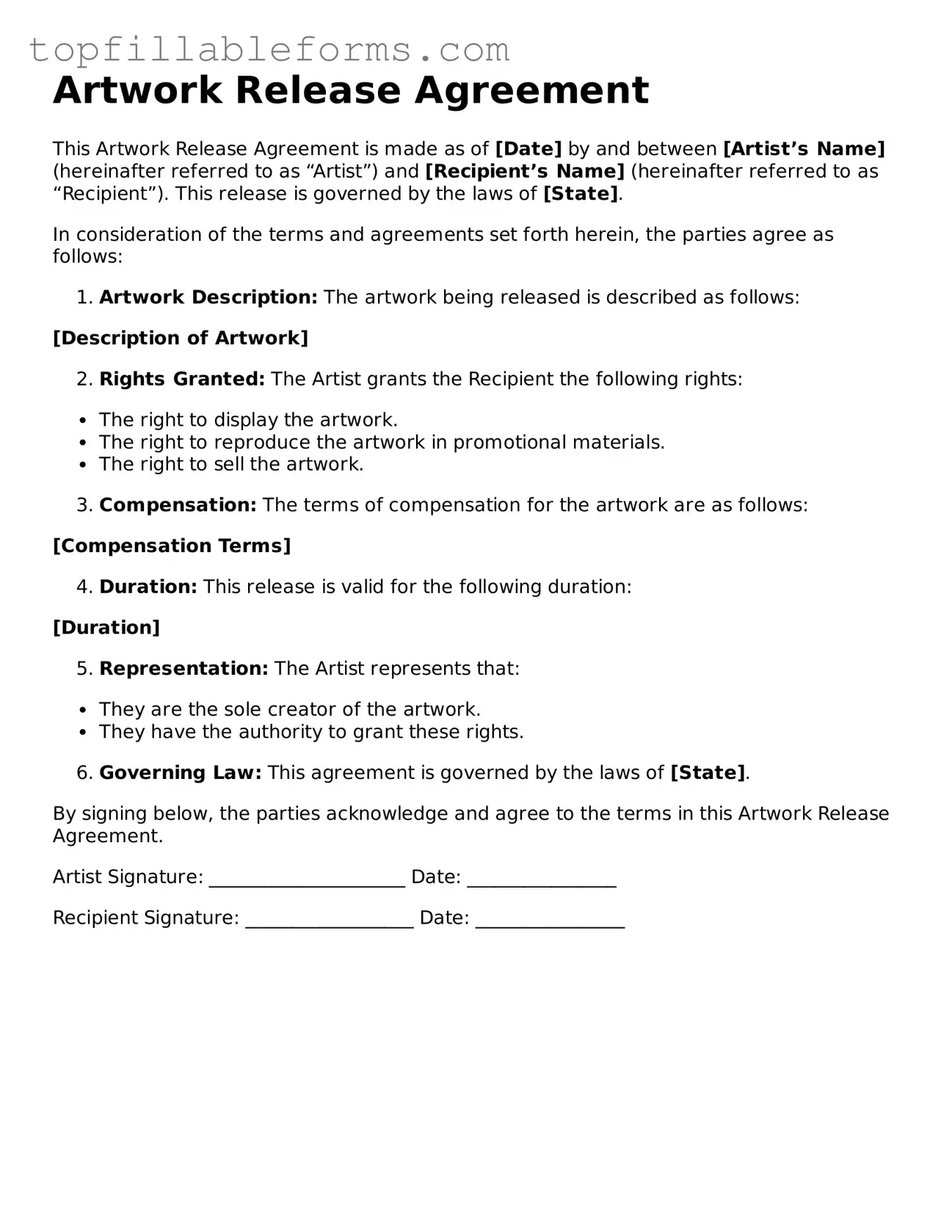Artwork Release Agreement
This Artwork Release Agreement is made as of [Date] by and between [Artist’s Name] (hereinafter referred to as “Artist”) and [Recipient’s Name] (hereinafter referred to as “Recipient”). This release is governed by the laws of [State].
In consideration of the terms and agreements set forth herein, the parties agree as follows:
- Artwork Description: The artwork being released is described as follows:
[Description of Artwork]
- Rights Granted: The Artist grants the Recipient the following rights:
- The right to display the artwork.
- The right to reproduce the artwork in promotional materials.
- The right to sell the artwork.
- Compensation: The terms of compensation for the artwork are as follows:
[Compensation Terms]
- Duration: This release is valid for the following duration:
[Duration]
- Representation: The Artist represents that:
- They are the sole creator of the artwork.
- They have the authority to grant these rights.
- Governing Law: This agreement is governed by the laws of [State].
By signing below, the parties acknowledge and agree to the terms in this Artwork Release Agreement.
Artist Signature: _____________________ Date: ________________
Recipient Signature: __________________ Date: ________________
